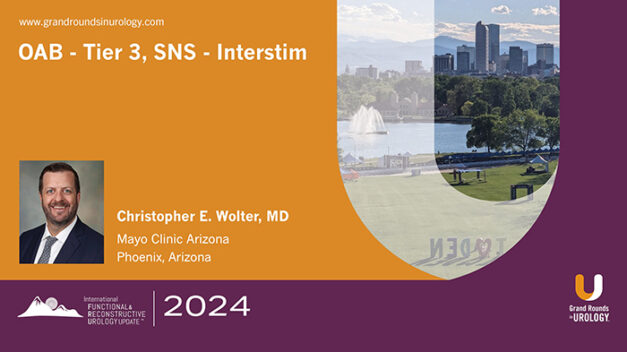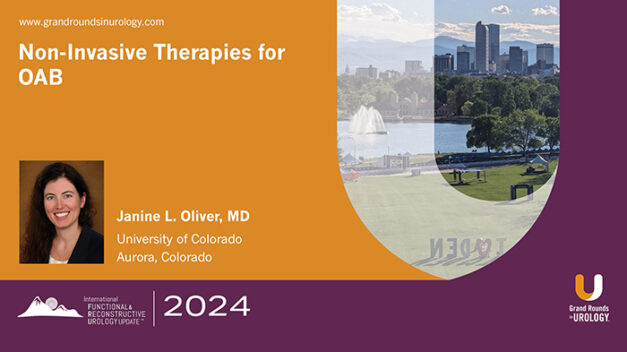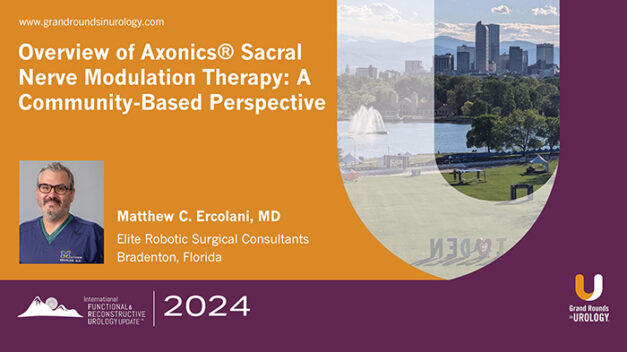OAB – Tier 3, SNS – Interstim
Christopher E. Wolter, MD, focuses on sacral neuromodulation (SNM), specifically InterStim, and its role in treating voiding dysfunction. In this 11-minute presentation, Wolter outlines the historical development of neuromodulation, emphasizing SNM’s effectiveness compared to medications. It also offers the potential to manage fecal incontinence, neurogenic bladder dysfunction, and even interstitial cystitis in some cases.
Dr. Wolter discusses the operative approach for SNM placement, highlighting the importance of proper technique. He illustrates the procedure with photographs and x-rays, providing step-by-step instructions and suggestions to ensure a successful outcome.





